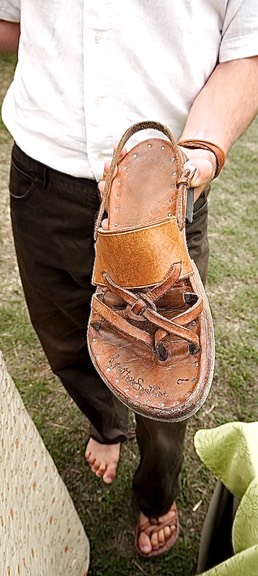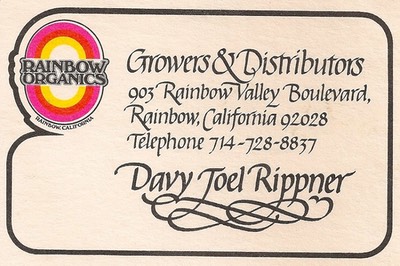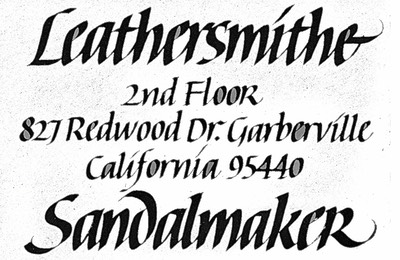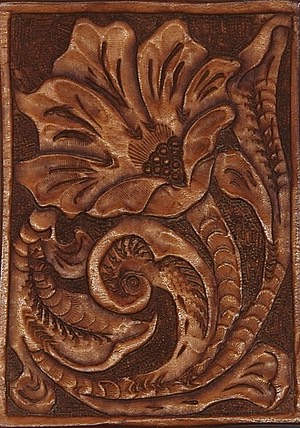Taking care of your sandals
Use a piece of coarse cloth (old denim, linen, or a horsehair shoe brush) to make a light lather with warm water in the saddle soap tin. Rub this foamy lather over and into every surface on the top and edges of your sandals, especially transition points. Straps should be saddle soaped & pulled back & forth in their channels, to loosen and clean them. Slots for the straps are tight but will loosen with age. The single long 3/8" strap will stretch, as will the broad arch strap, over the life of the sandals.
When you are done, use a brush or cloth to rub off surplus foam and allow the sandals to dry for 15 minutes. Then work dubbin into all the surfaces and the straps until there isn't any residue. You can walk around in the sandals until they are dry (the quickest way to break in new sandals) or allow them to dry for a few hours before wearing them. While breaking in your sandals don't tighten your straps more than I do at your fitting or you will suffer needlessly. They will require a week or two of intermittent wear (walking in them) in order to fully break in. Some customers break them in the first day.
Separation of the half-sole
The tip of the toe is the most likely location for separation because it is the leading edge. The cushy rubber I use for the half sole & heel is a choice based partly on its absorptive qualities, part on comfort. Barge shoemakers cement permeates the rubber and can be depended upon to keep it attached to the equally-absorbent cowhide sole, but it sometimes lifts and should be dealt with at first notice.
I'm willing to have the sandals returned for me to do it, and I'll check them out for loose nails, strap-stretch, etc., at that time. That would be my first choice.
If, however, you want to do something immediately and continue wearing them without fear of further separation, you have a couple choices:
Purchase a small tube of contact cement and follow my instructions for bonding the separation in the tutorial half-way down, under Cementing Insole to Outer Sole.
Another option is to purchase a tube of Shoe Goo adhesive.(Home Depot, 3.7oz for $11Cdn). Use a popsicle stick or toothpick to apply into the separation and clamp it together or put a weight on it while it sets up. This stuff is magical and I always have some on-hand for many kinds of repairs.
If you choose to make your own repairs, you can later bring or mail them to me and I'll make sure they are put into tip-top condition. The contact cement or Shoe Goo won't prevent me from doing my own repair, but will allow you to continue wearing them until you can get them back to my shoppe.
If it looks like you are prone to clipping the toes on stairs or rocks, etc., I may put a clincher nail into the toe area from underneath, but am reluctant to do so. I'll decide when I see them.
Because I traveled widely as a young man, I can imagine you in your sandals with a half-sole beginning to separate, or needing a replacement strap or a clincher nail, far from my workshoppe. So I've designed and made them using traditional methods and out of traditional materials. In so doing I think you are safe having them repaired or the narrow strap replaced far from home if you can find someone who understands the design and construction. This may be more difficult than you think, now that shoemaking has become so automated. Best to return them to me, when this is possible. I'll keep them in righteous condition at no cost for 10 years, and charge a fair price to replace half-soles or heels, if necessary.









